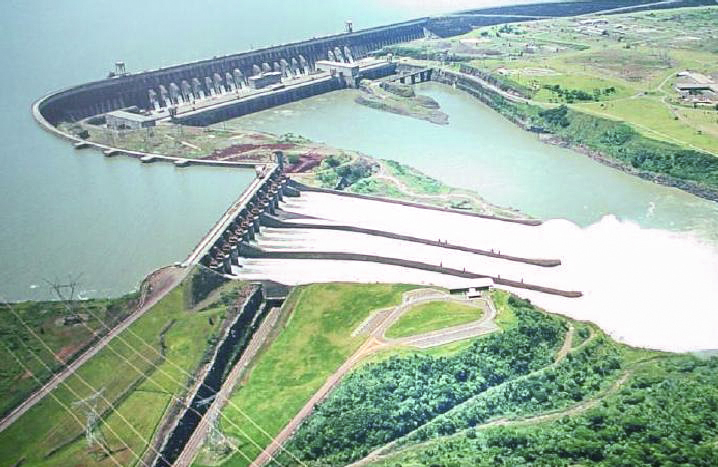|
SST-1 (tokamak)
SST-1 (or Steady State Superconducting Tokamak) is a plasma (physics), plasma confinement experimental device in the Institute for Plasma Research (IPR), an autonomous research institute under Department of Atomic Energy, India. It belongs to a new generation of tokamaks with the major objective being steady state operation of an advanced configuration ('D' Shaped) plasma. It has been designed as a medium-sized tokamak with superconducting magnets. The SST-1 project helped India become capable of conceptualizing and making a fully functional fusion reactor, fusion based reactor device. The SST-1 System is housed in Institute for Plasma Research, Gandhinagar. The SST-1 mission has been led by Indian plasma physicists Prof. Y.C. Saxena, Dr. Chenna Reddy, Dr. Subrata Pradhan and Dr. Daniel Raju (presently). SST-1 will be followed by a larger machine SST-2 before building the Indian DEMO fusion power plant. History The first talks about SST Mission started in 1994. The technical d ... [...More Info...] [...Related Items...] OR: [Wikipedia] [Google] [Baidu] [Amazon] |
Tokamak
A tokamak (; ) is a device which uses a powerful magnetic field generated by external magnets to confine plasma (physics), plasma in the shape of an axially symmetrical torus. The tokamak is one of several types of magnetic confinement fusion, magnetic confinement devices being developed to produce controlled thermonuclear fusion power. The tokamak concept is currently one of the leading candidates for a practical fusion reactor for providing minimally polluting electrical power. The proposal to use controlled thermonuclear fusion for industrial purposes and a specific scheme using thermal insulation of high-temperature plasma by an electric field was first formulated by the Soviet physicist Oleg Lavrentiev in a mid-1950 paper. In 1951, Andrei Sakharov and Igor Tamm modified the scheme by proposing a theoretical basis for a thermonuclear reactor, where the plasma would have the shape of a torus and be held by a magnetic field. The first tokamak was built in the Soviet Union ... [...More Info...] [...Related Items...] OR: [Wikipedia] [Google] [Baidu] [Amazon] |
Langmuir Probe
A Langmuir probe is a device used to determine the electron temperature, electron density, and electric potential of a plasma. It works by inserting one or more electrodes into a plasma, with a constant or time-varying electric potential between the various electrodes or between them and the surrounding vessel. The measured currents and potentials in this system allow the determination of the physical properties of the plasma. ''I-V'' characteristic of the Debye sheath The beginning of Langmuir probe theory is the ''I–V'' characteristic of the Debye sheath, that is, the current density flowing to a surface in a plasma as a function of the voltage drop across the sheath. The analysis presented here indicates how the electron temperature, electron density, and plasma potential can be derived from the ''I–V'' characteristic. In some situations a more detailed analysis can yield information on the ion density (n_i), the ion temperature T_i, or the electron energy distribution ... [...More Info...] [...Related Items...] OR: [Wikipedia] [Google] [Baidu] [Amazon] |
Megaproject
A megaproject is an extremely large-scale construction and investment project. A more general definition is "Megaprojects are temporary endeavours (i.e. projects) characterised by: large investment commitment, vast complexity (especially in organisational terms), and long-lasting impact on the economy, the environment, and society". Megaprojects refer not only to construction projects but also decommissioning projects, which are projects that can reach multi-billion budgets, and have a high level of innovation and complexity, and are affected by a number of techno-socio-economic and organizational challenges. The OFCCP Mega Construction Project (Megaproject) Program involves projects valued at over $35 million. Downsides Megaprojects are often affected by corruption, leading to higher cost and lower benefit. According to the European Cooperation in Science and Technology (COST), megaprojects are characterized both by "extreme complexity (both in technical and human terms) a ... [...More Info...] [...Related Items...] OR: [Wikipedia] [Google] [Baidu] [Amazon] |
ADITYA (tokamak)
ADITYA is a medium size tokamak installed at the Institute for Plasma Research in India. Its construction began in 1982, and it was commissioned in 1989. It was the first tokamak in India. It has a major radius of 0.75 metres and a minor radius of 0.25 metres. The maximum field strength is 1.2 tesla produced by 20 toroidal field coils spaced symmetrically in the toroidal direction. It is operated by two power supplies, a capacitor bank and the APPS (ADITYA pulse power supply). The typical plasma parameters during capacitor bank discharges are: Ip ~30 kA, shot duration ~25 ms, central electron temperature ~100 eV and core plasma density ~1019 m−3 and the typical parameters of APPS operation is ~100 kA plasma current, ~ 100 ms duration, central electron temp. ~300 eV and ~3x1019 m−3 core plasma density. Various diagnostics used in ADITYA include electric and magnetic probes, microwave interferometry, Thomson scattering and charge ... [...More Info...] [...Related Items...] OR: [Wikipedia] [Google] [Baidu] [Amazon] |
Mega Ampere Spherical Tokamak
Mega Ampere Spherical Tokamak (MAST) was a nuclear fusion experiment, testing a spherical tokamak nuclear fusion reactor, and commissioned by EURATOM/ UKAEA. The original MAST experiment took place at the Culham Centre for Fusion Energy, Oxfordshire, England from December 1999 to September 2013. A successor experiment called MAST Upgrade began operation in 2020. Design A spherical tokamak is shaped more like a cored apple than the conventional, doughnut-shaped toroidal design used by experiments such as ITER. Spherical tokamaks are more efficient in their use of the magnetic field. MAST included a neutral beam injector for plasma heating. It used a merging compression technique for plasma formation instead of the conventional direct induction. Merging compression saves central solenoid flux, which can then be used to increase the plasma current and/or maintain the required current flat-top. MAST's plasma volume was about 8 cubic meters. It confined plasmas with densitie ... [...More Info...] [...Related Items...] OR: [Wikipedia] [Google] [Baidu] [Amazon] |
European Fusion Development Agreement
EFDA (1999 — 2013) has been followed by EUROfusion, which is a consortium of national fusion research institutes located in the European Union and Switzerland. The European Union has a strongly coordinated nuclear fusion research programme. At the European level, the so-calleEURATOM Treatyis the international legal framework under which member states cooperate in the fields of nuclear fusion research. ThEuropean Fusion Development Agreement(EFDA) is an agreement between European fusion research institutions and the European Commission (which represents Euratom) to strengthen their coordination and collaboration, and to participate in collective activities in the field of nuclear fusion research. In Europe, fusion research takes place in a great number of research institutes and universities. In each member state of the European Fusion Programme at least one research organisation has a "Contract of Association" with the European Commission. All the fusion research organisations ... [...More Info...] [...Related Items...] OR: [Wikipedia] [Google] [Baidu] [Amazon] |
Joint European Torus
The Joint European Torus (JET) was a magnetically confined plasma physics experiment, located at Culham Centre for Fusion Energy in Oxfordshire, UK. Based on a tokamak design, the fusion research facility was a joint European project with the main purpose of opening the way to future nuclear fusion grid energy. At the time of its design JET was larger than any comparable machine. JET began operation in 1983 and spent most of the next decade increasing its performance in a lengthy series of experiments and upgrades. In 1991 the first experiments including tritium were made, making JET the first reactor in the world to run on the production fuel mix of 50–50 tritium and deuterium. It was also decided to add a divertor design to JET, which occurred between 1991 and 1993. Performance was significantly improved, and in 1997 JET set the record for the closest approach to scientific breakeven, reaching ''Q'' = 0.67 in 1997, producing 16 MW of fusion power while injecting 24&nbs ... [...More Info...] [...Related Items...] OR: [Wikipedia] [Google] [Baidu] [Amazon] |
HiPER
The High Power laser Energy Research facility (HiPER), is a proposed experimental laser-driven inertial confinement fusion (ICF) device undergoing preliminary design for possible construction in the European Union. , the effort appears to be inactive. HiPER was designed to study the "fast ignition" approach to generating nuclear fusion, which uses much smaller lasers than conventional ICF designs, yet produces fusion power outputs of about the same magnitude. This offers a total " fusion gain" that is much higher than devices like the National Ignition Facility (NIF), and a reduction in construction costs of about ten times. This opened a window for a small machine to be rapidly built that would reach ignition before NIF. HiPER and the Japanese FIREX designs intended to explore this approach. However, research into the fast ignition approach on smaller machines like the Omega laser in the US demonstrated a number of problems with the concept. Another alternative approach, ''sh ... [...More Info...] [...Related Items...] OR: [Wikipedia] [Google] [Baidu] [Amazon] |
Lawrence Livermore National Laboratory
Lawrence Livermore National Laboratory (LLNL) is a Federally funded research and development centers, federally funded research and development center in Livermore, California, United States. Originally established in 1952, the laboratory now is sponsored by the United States Department of Energy and administered privately by Lawrence Livermore National Security, LLC. The lab was originally established as the University of California Radiation Laboratory, Livermore Branch in 1952 in response to the detonation of the Soviet Union's first atomic bomb during the Cold War. It later became autonomous in 1971 and was designated a national laboratory in 1981. Lawrence Livermore Lab is primarily funded by the United States Department of Energy, U.S. Department of Energy and it is managed Privately held company, privately and operated by Lawrence Livermore National Security, LLC (a Public-private partnerships in the United States, partnership of the University of California, Bechtel, BW ... [...More Info...] [...Related Items...] OR: [Wikipedia] [Google] [Baidu] [Amazon] |
National Ignition Facility
The National Ignition Facility (NIF) is a laser-based inertial confinement fusion (ICF) research device, located at Lawrence Livermore National Laboratory in Livermore, California, United States. NIF's mission is to achieve fusion ignition with high fusion energy gain factor, energy gain. It achieved the first instance of scientific Fusion energy gain factor#Breakeven, breakeven controlled fusion in an experiment on December 5, 2022, with an energy gain factor of 1.5. It supports nuclear weapon maintenance and design by studying the equation of state, behavior of matter under the conditions found within nuclear explosions. NIF is the largest and most powerful ICF device built to date. The basic ICF concept is to squeeze a small amount of fuel to reach the pressure and temperature necessary for fusion. NIF hosts the world's most energetic laser, which indirectly heats the outer layer of a small sphere. The energy is so intense that it causes the sphere to implode, squeezing the ... [...More Info...] [...Related Items...] OR: [Wikipedia] [Google] [Baidu] [Amazon] |
Max-Planck-Institut Für Plasmaphysik
The Max Planck Institute for Plasma Physics (, IPP) is a physics institute investigating the physical foundations of a fusion power plant. The IPP is an institute of the Max Planck Society, part of the European Atomic Energy Community, and an associated member of the Helmholtz Association. The IPP has two sites: Garching near Munich (founded 1960) and Greifswald (founded 1994), both in Germany. It owns several large devices, namely the experimental tokamak ASDEX Upgrade (in operation since 1991), the experimental stellarator Wendelstein 7-X (in operation since 2016), a tandem accelerator and a high heat flux test facility (GLADIS) Furthermore it cooperates closely with the ITER, DEMO and JET projects. The International Helmholtz Graduate School for Plasma Physics partners with the Technical University of Munich (TUM) and the University of Greifswald. Associated partners are the Leibniz Institute for Plasma Science and Technology (INP) in Greifswald and the Leibniz Compu ... [...More Info...] [...Related Items...] OR: [Wikipedia] [Google] [Baidu] [Amazon] |
Wendelstein 7-X
The Wendelstein 7-X (abbreviated W7-X) reactor is an experimental stellarator built in Greifswald, Germany, by the Max Planck Institute for Plasma Physics (IPP), and completed in October 2015.Introduction – the Wendelstein 7-X stellarator Retrieved 5 November 2014. Its purpose is to advance stellarator technology: though this experimental reactor will not produce electricity, it is used to evaluate the main components of a future plant; it was developed based on the predecessor Wendelstein 7-AS experimental reactor. , the Wendelstein 7-X reactor is ... [...More Info...] [...Related Items...] OR: [Wikipedia] [Google] [Baidu] [Amazon] |




